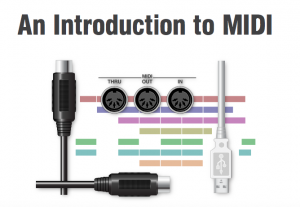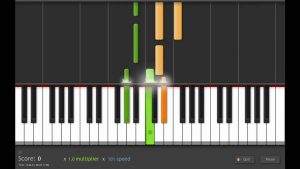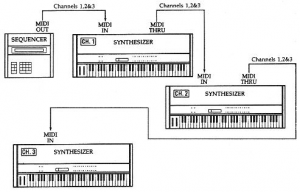What is MIDI?
Since its inception in 1983, the MIDI file format has efficiently stored and transmitted musical data between various devices. Although its initial purpose was for controlling multiple instruments at once, MIDI has come to be for a variety of methods, including musical composition, file sharing, and software synthesis.
MIDI, or Musical Instrument Digital Interface, is an engineering standard, created in the 1980s, that can be used to connect and transmit information between various compatible instruments and computers. MIDI files do not actually encode music itself, like .mp3 or .wav files do, rather MIDI encodes a set of instructions for the music, including the notation, pitch, and amplitude, as well as more complex features such as vibrato.
Figure 1. User Interface of Synthesia, a MIDI composition and playback software
Essentially, a source, which is usually a computer, can be used to transmit these instructions to instruments that are connected to it. The MIDI file will then be read by a sound module on each of the instruments that specify what set of instructions each instrument should use and decodes it into an actual sound, that is then amplified by an on-board amplifier. Since MIDI is merely a set of musical instructions, it can be modified as needed, much like a musical score, using a piece of software known as a sequencer (Figures 1 and 2). Qualities such as these, as well as MIDI’s small file size contributed to its heavy use in music composition and production and it’s popularity continues to this day.
Figure 2. Potential MIDI setup. a sequencer is used to control the playback of multiple MIDI compatible keyboards
https://www.youtube.com/watch?v=p_c6uQHlhZ0


